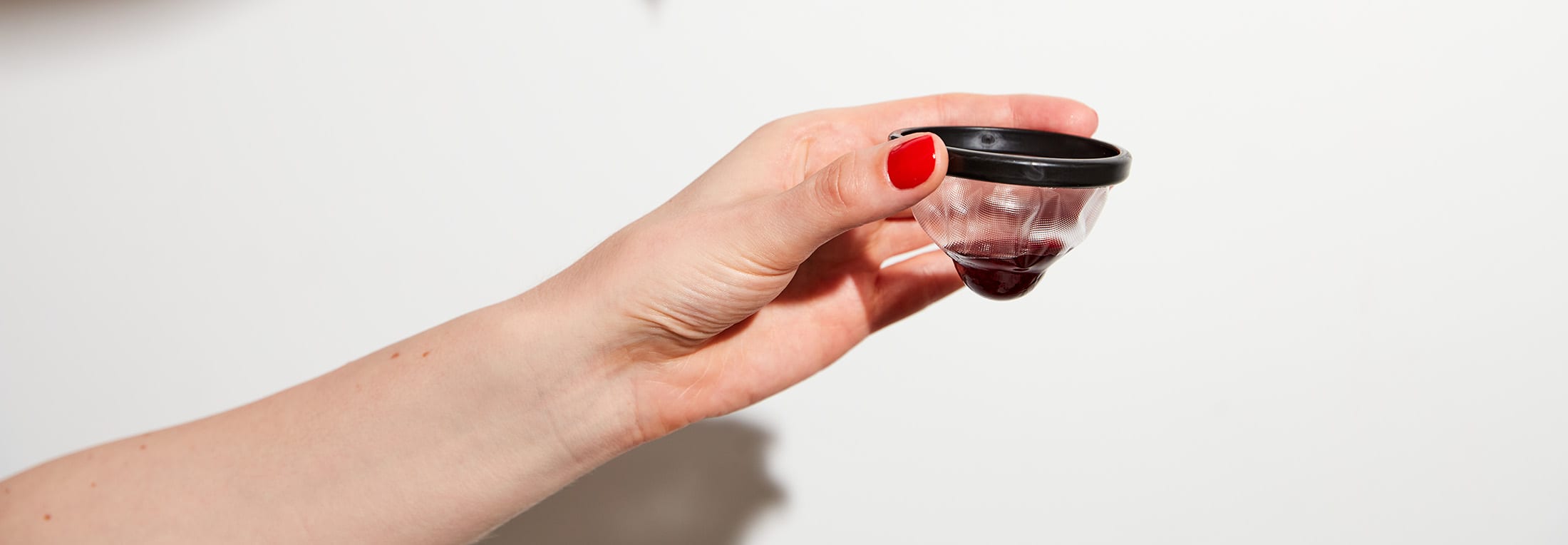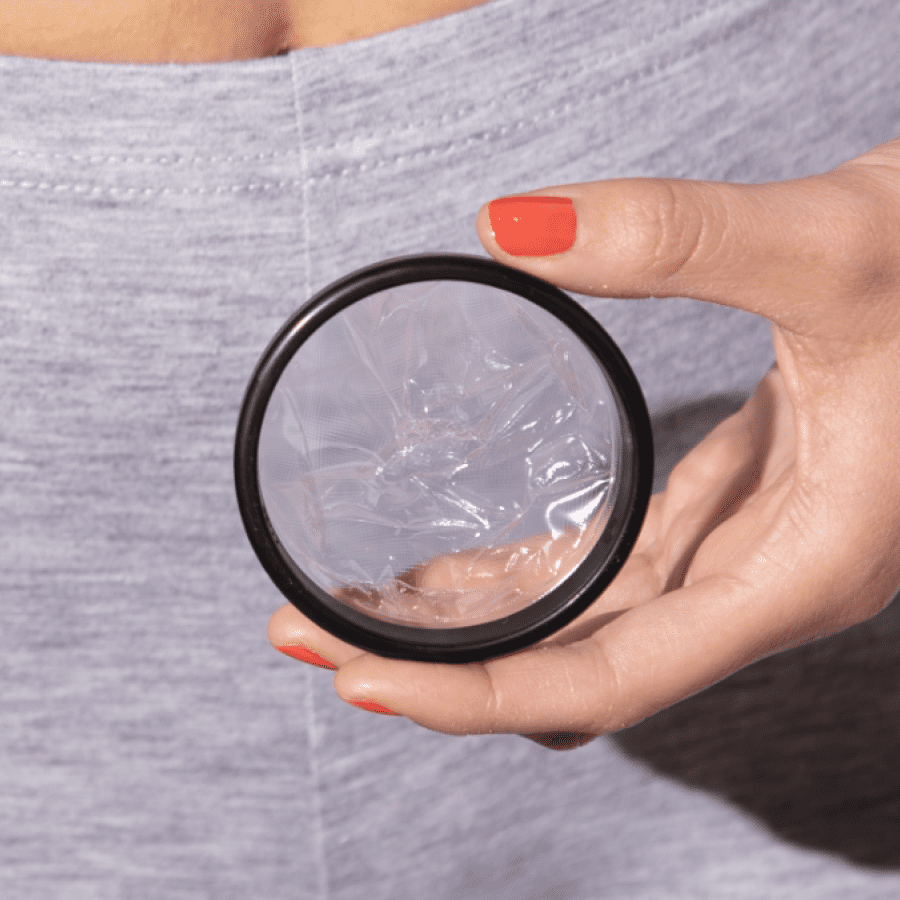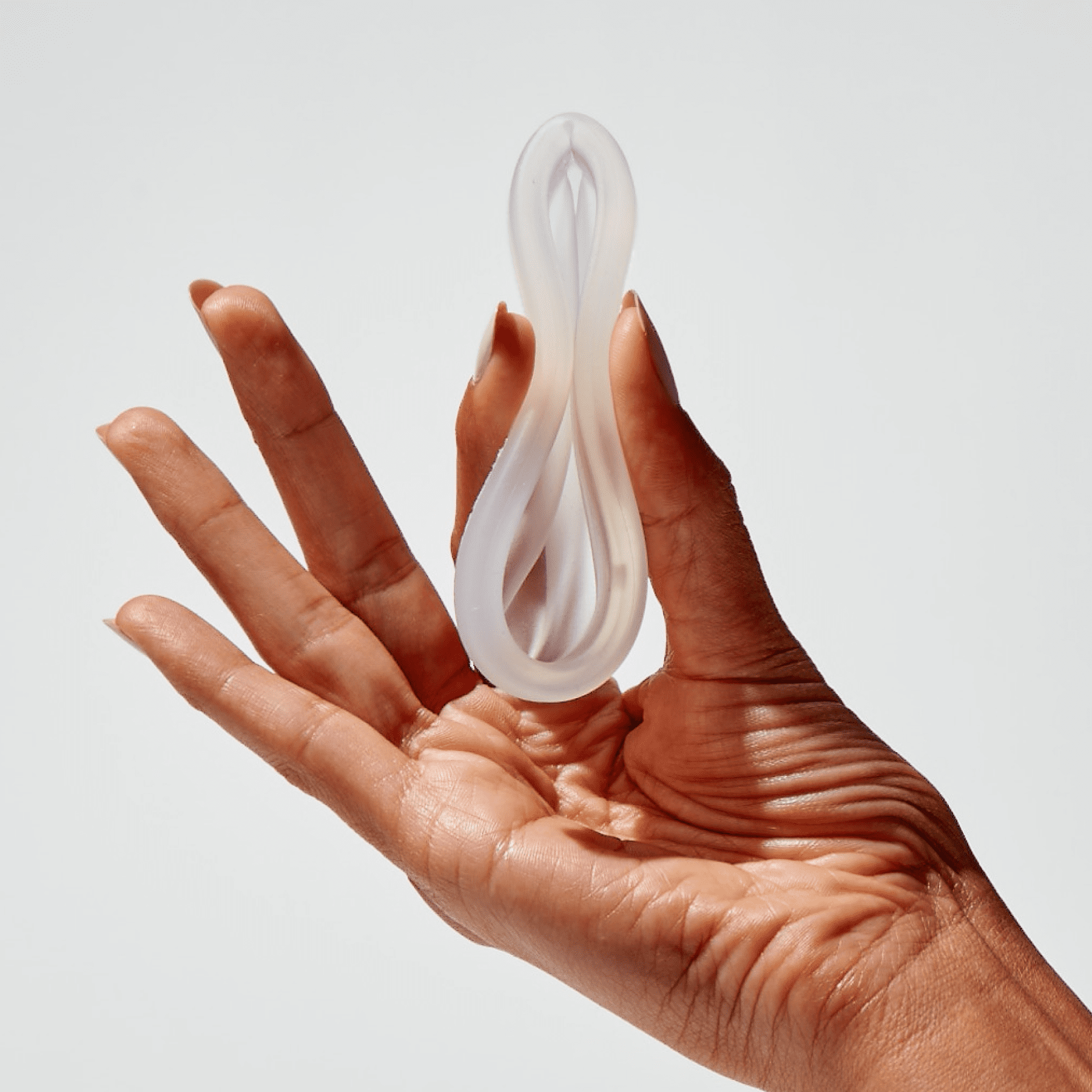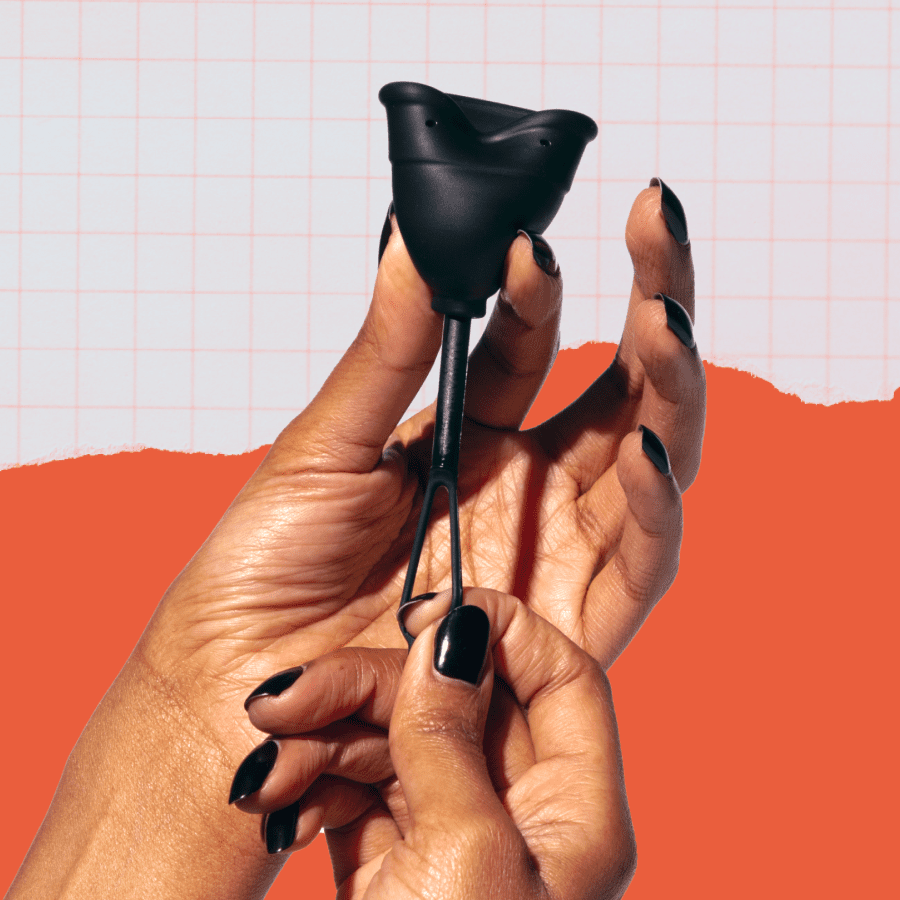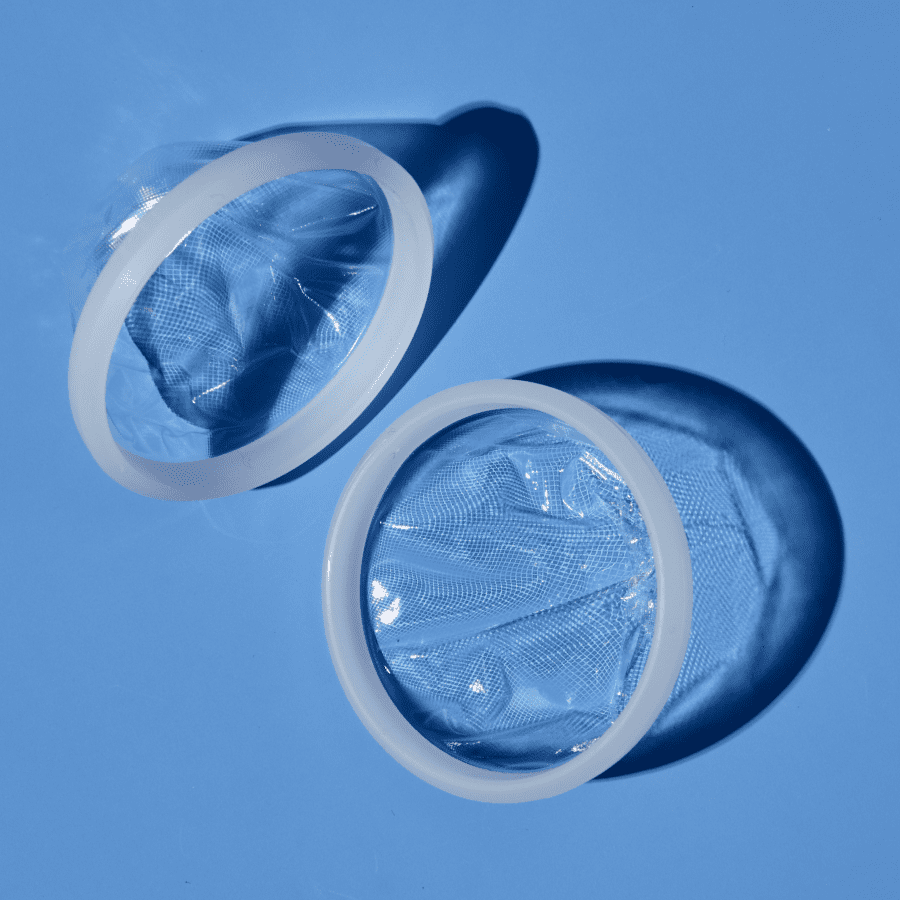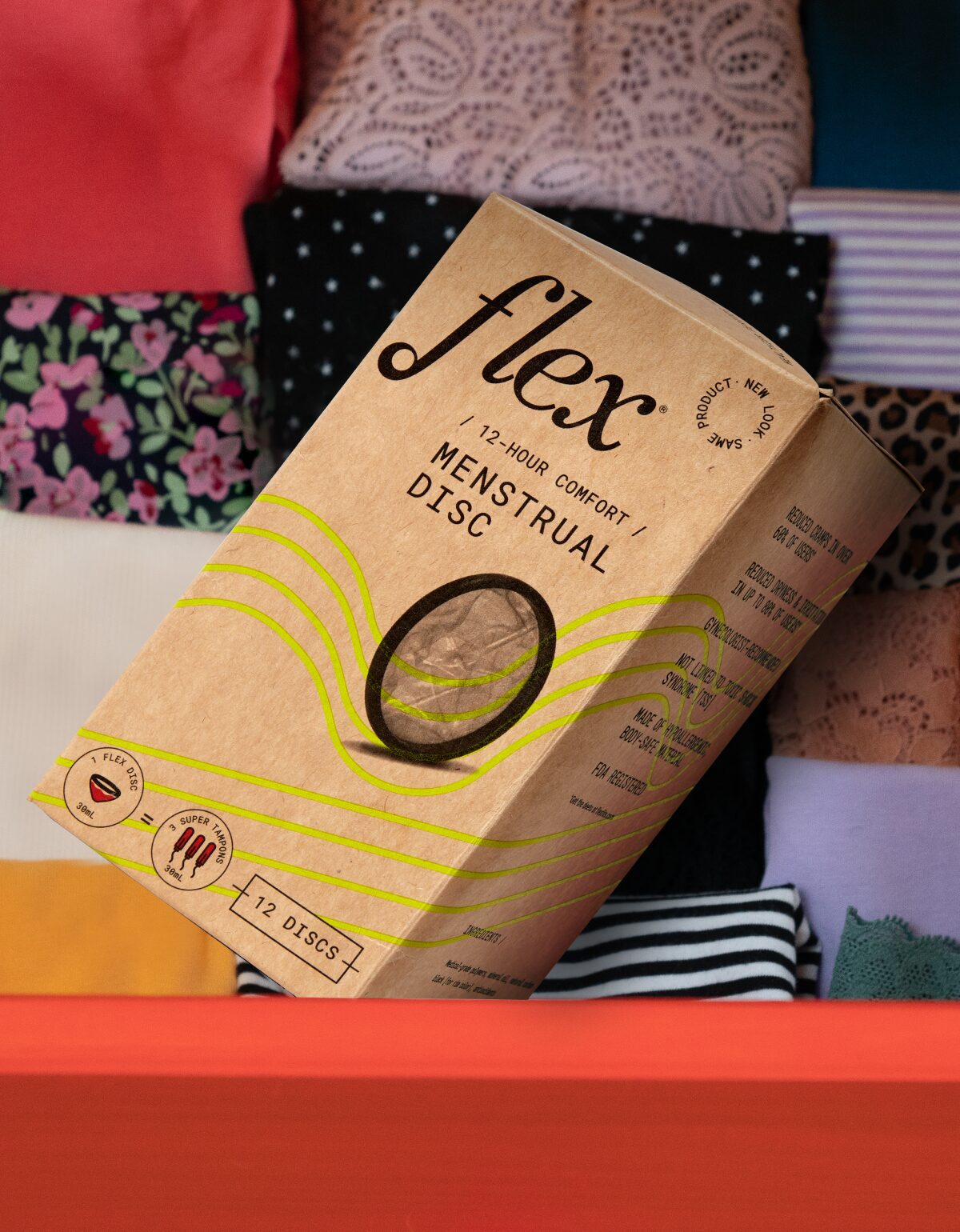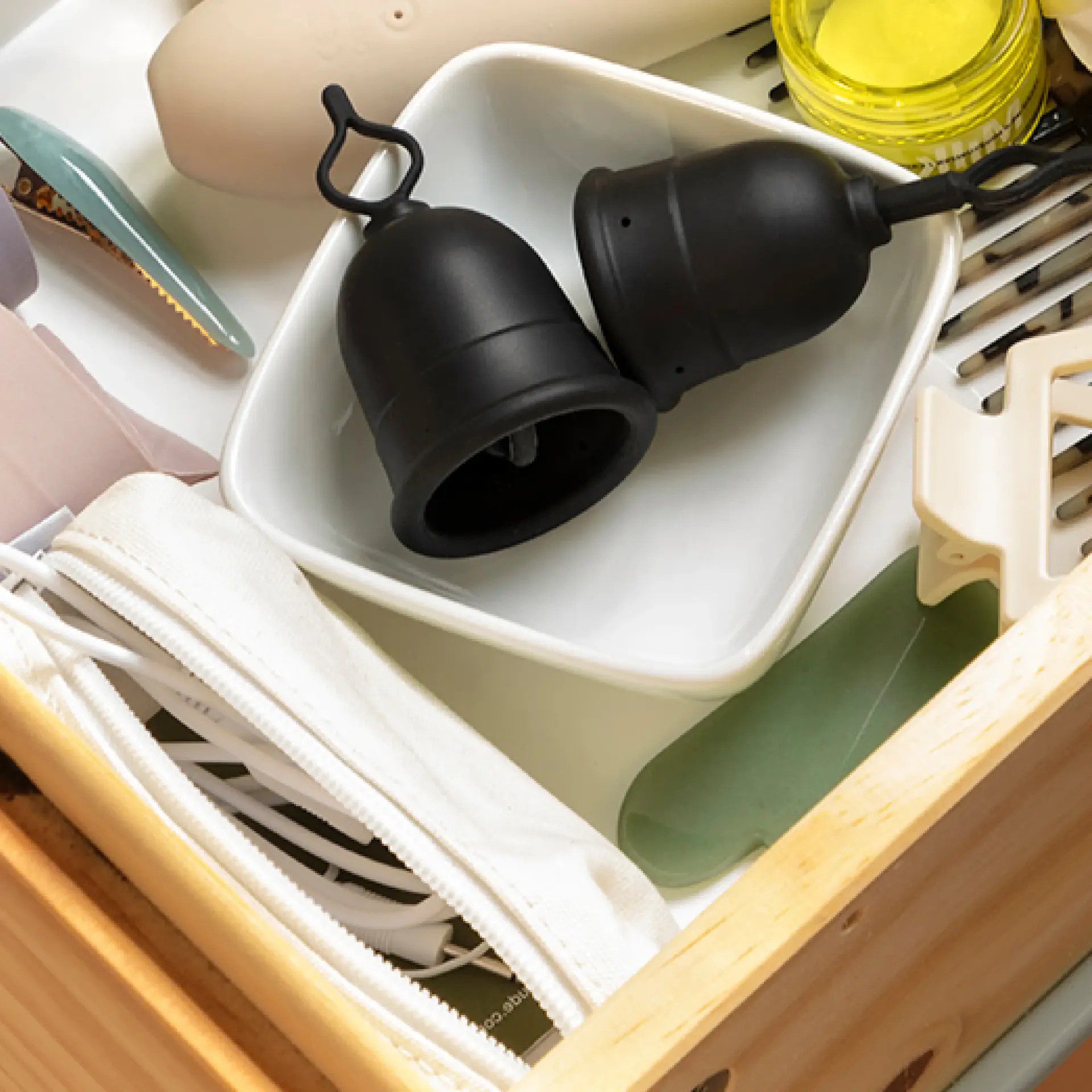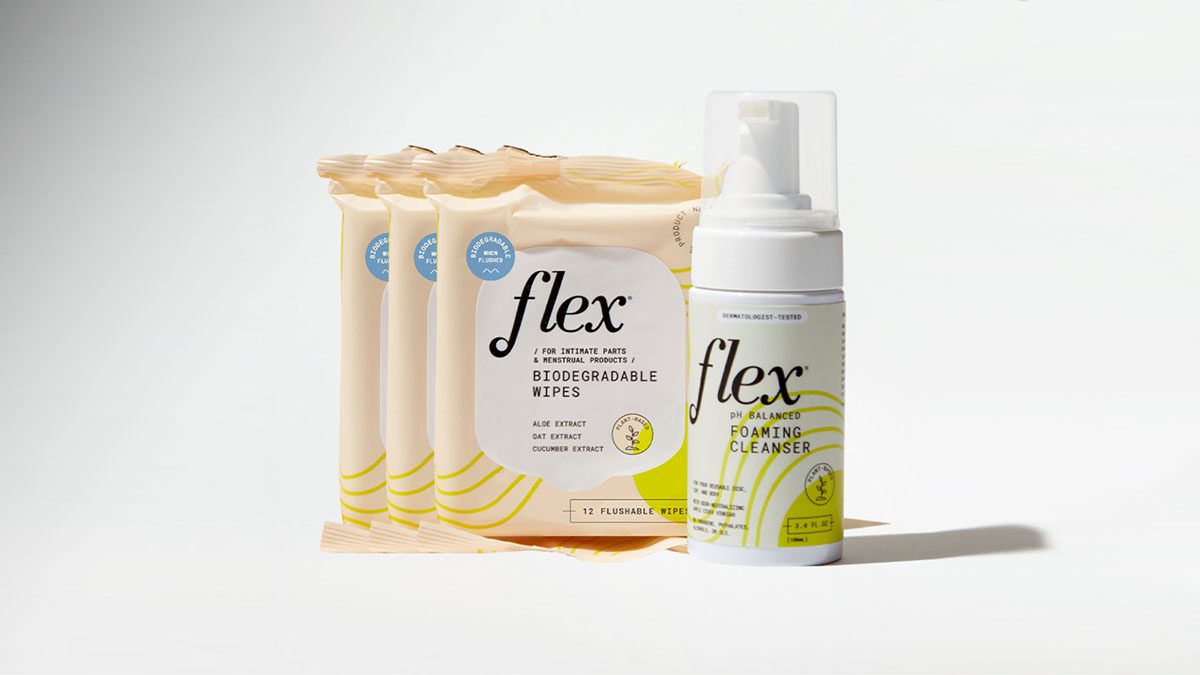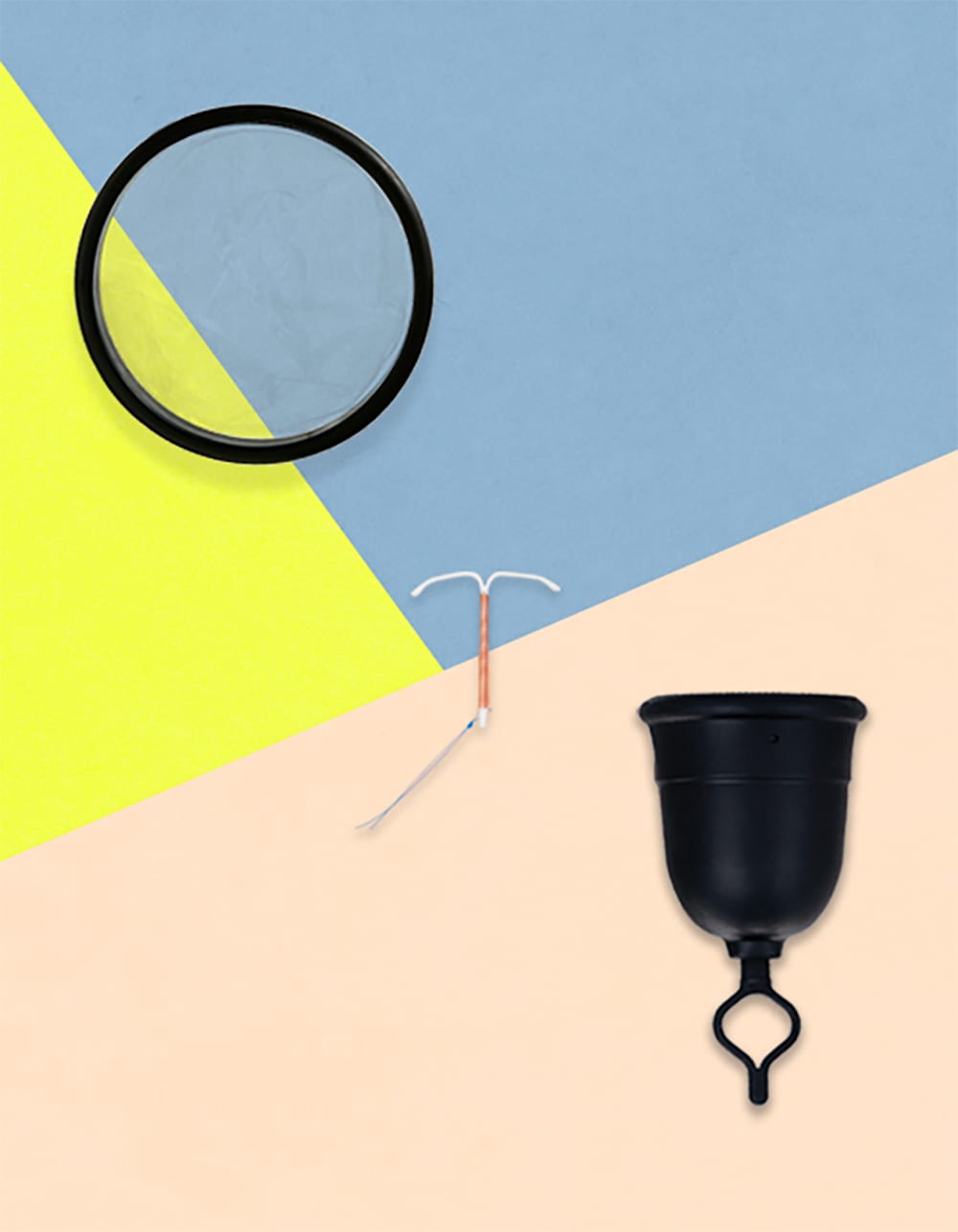Why trying a menstrual disc is worth the learning curve
Did I put this in right? Is it going to leak? Can a Flex disc get stuck? What if it gets lost? How will I get this thing out? What if I get blood everywhere?
You probably asked yourself at least one of these when learning how to use a tampon – and most of us didn’t nail it the first time we used one. Or the first several tries. Honestly, some of us still haven’t quite figured out how to make them work perfectly (and we are full-grown adults).
Either way, before it became a part of life’s routine, you probably had plenty of questions. In the same way, learning how to use Flex Disc™ requires a leap of faith, belief in your own vagina-whispering tactics, and maybe some practice.

New menstrual product, who dis?
Menstrual discs have actually been around since the 1990’s, but many people have still never heard of them, let alone tried one.
Change and newness can be scary, especially when it involves putting something new in your vagina. But if the outcome of trying menstrual discs is having the most comfortable period of your life, we believe you’ll find the learning curve is beyond worth it.
If you’re nervous about trying discs, consider this comment we hear all the time:
I didn’t love it the first time… Now I can’t imagine ever using anything else.
The heavy flow of tampon woes
Except maybe you still don’t love them, or are scared to use tampons in the first place, which is why you’re researching tampon alternatives now.
More people are becoming aware that tampons can disrupt vaginal pH, cause infections and irritation, or just feel uncomfortable, like: when you try to remove a tampon when your period decides it’s taking a break in the middle of your flow, and it feels like you’re pulling a stick of sandpaper out of your vagina. Or maybe the tampon string breaks and all of a sudden you’re frantically searching “how to remove a stuck tampon” on the Internet.
Flex Disc won’t feel like you’re tearing out the delicate insides of your vaginal canal when you remove it. They glide out, even on your lightest days.
Pro Tip: You can practice inserting and removing the disc at any time of the month to reach Flexpert status by the time your period starts. Start here to learn the ins and outs of using Flex Disc.
Switching to discs doesn’t just benefit you – it’s better for the environment, too. Flex Discs create 60% less waste than tampons. Designed to be worn for up to 12 hours, each disc holds the same amount as three regular tampons.
Another plus? Flex Discs have never been linked to Toxic Shock Syndrome (TSS), which is definitely still a thing if you’re using tampons. Flex Discs are FDA approved and ob gyn recommended.
How will that thing fit inside me?
Let’s be honest, a menstrual disc looks huge. How in the world is that supposed to fit inside your tiny vagina?
Luckily, the disc is very flexible and was designed to be pinched in half for insertion. When pinched, the disc is only about 70mm wide, very similar in width to an average sized tampon.
Vaginas are very elastic, and the shape of a Flex Disc was planned specifically to fit comfortably inside the vaginal fornix (the widest part of the vaginal canal, all the way at the back, near your cervix). So, even though a menstrual disc looks big, it was designed to fit over 90% of people who get a period.
Watch our guide on how to insert the disc here:
Can a menstrual disc get lost inside? Since your vagina is not a black hole, there’s no need to worry about a disc getting lost inside of you, either. Your vagina is more like a cul-de-sac, which means that a disc cannot get lost inside of you.
Removal is within a finger’s reach, and if you’re ever having trouble getting your disc out, we have lots of tips available for you here.
The most comfortable period of your life
Because the disc sits high up in the vaginal fornix, when inserted properly, you shouldn’t be able to feel it at all.
Wondering how to know if flex disc is in right? If there is anything uncomfortable happening with the menstrual disc inserted, it is likely caused by the disc not being positioned correctly within your own anatomy. Try reading this guide if your disc feels like anything other than nothing inside of you.
Still on the fence? What if we told you that Flex Disc can help reduce cramps? That’s because it collects your menstrual flow, rather than absorbing it – tampons get bigger when they fill up with blood, putting pressure on the vaginal walls and causing those muscles to tighten up.
Flex Disc doesn’t put pressure on the vaginal walls AND it moves with your body when your uterus contracts (which is what causes cramping).
After switching to Flex, 52% of users felt more comfortable on their periods.
For many, the biggest reason to try a period disc is because many users experience a dramatic decrease in discomfort during their period after switching.
We surveyed over 400 individuals who use Flex Disc about how they experience their period. Before using Flex Discs, only 16% said their period week was “just like any other week,” whereas 76% said their week was uncomfortable in some way.
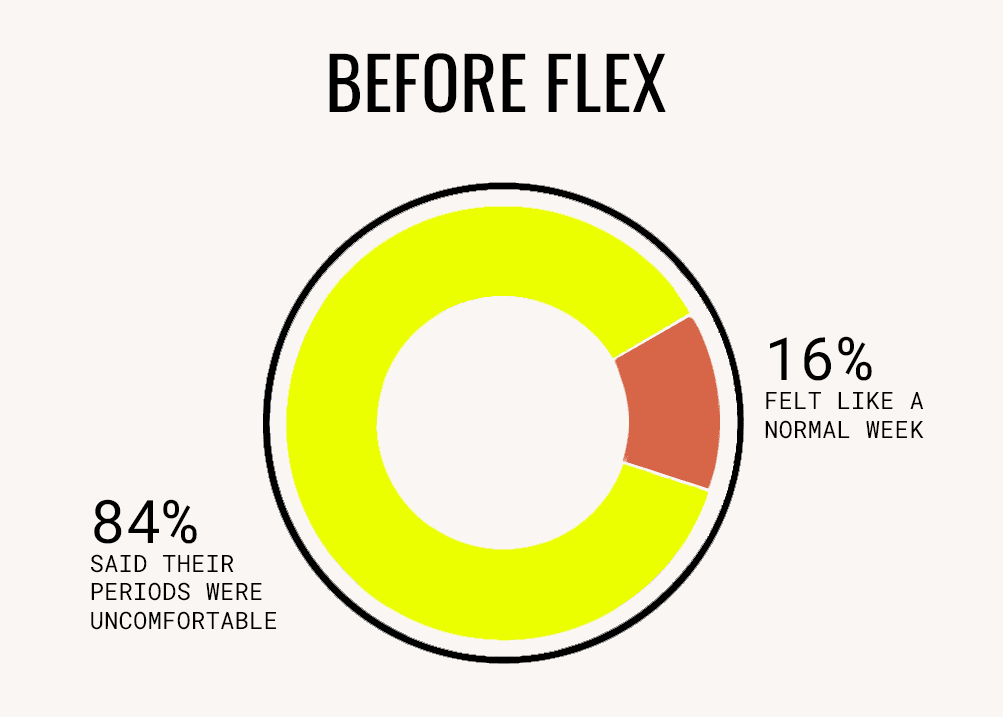
After switching to Flex®, 68% said that their period week felt like every other week. (!!!) That means that 52% of women saw a significant improvement in comfort during their period by switching to Flex Discs.

Disc leakage and blood angst
Maybe you’re ready to try Flex Discs, but you’re scared about leakage and blood. No period product is 100% perfect or fail-safe: Leaks all depend on how a product is used, inserted, and how often you’re able to escape to the bathroom for a change.
The great thing about Flex Disc? It can hold a lot more period blood than a tampon or pad – so you won’t have to change as frequently, even on your heaviest days. And when inserted correctly, menstrual discs are pretty darn good at creating a leak-proof seal.
Many times when there is leakage, it’s because the disc was not fully tucked behind the pubic bone (or not inserted all the way back into the vaginal fornix). Take a look at this handy diagram to get an idea of where your pubic bone is located.
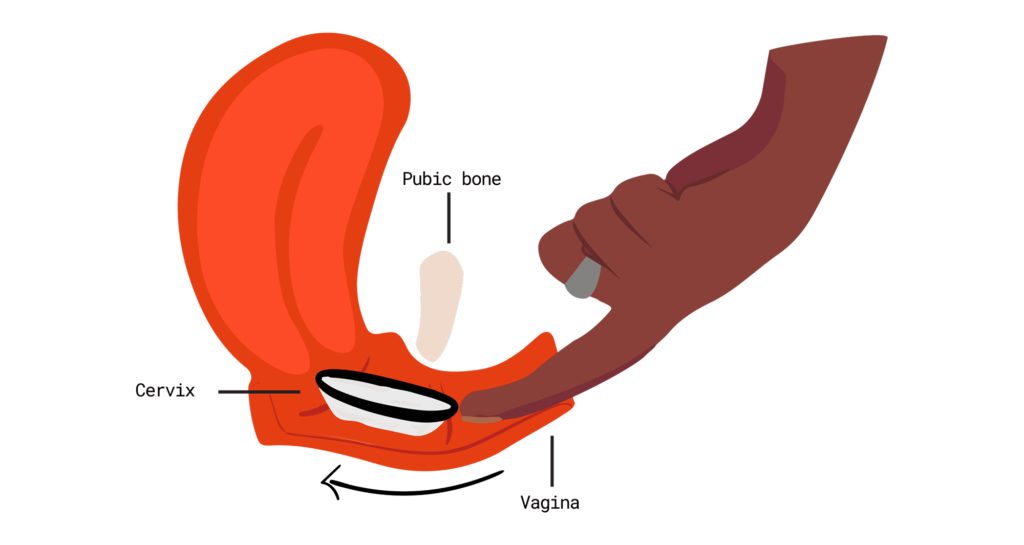
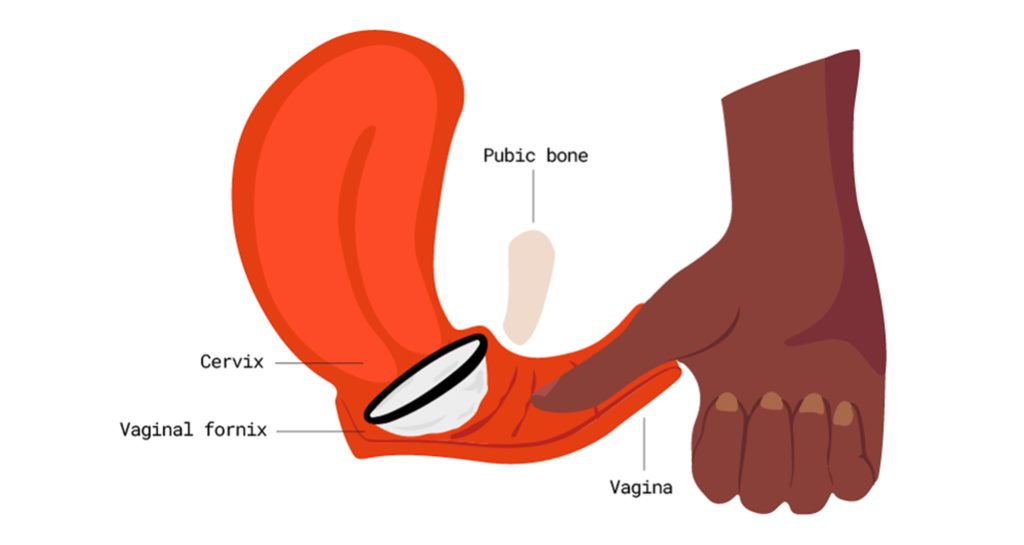
First things first, wash your hands. When you’re inserting the disc, think down and back (towards your tailbone… or the floor) and not up like when you insert a tampon. Depending on the height of your cervix, you may need to keep pushing your disc down and back until most of your finger is inside your vagina.
Some menstruators are lucky enough to get the hang of using our menstrual disc right away, others need time to learn their own anatomy and figure out a way to insert & place in a way that works best for their body.
And that blood in the toilet when you go to the bathroom? It’s perfectly normal. That’s your disc emptying with the help of your pelvic floor muscles — A.K.A. auto dump. Pro Tip: Do a few kegels or reach your disc with a finger and push it back up after it empties.
If you end up running into leakage issues, you can read all about why they’re happening and how to fix them here.
Practice makes perfect
Most users tell us it takes about a full cycle (so about 8-12 discs) before they feel really confident using Flex Disc as a tampon replacement. If you’re still figuring out positioning, don’t stress — you can always resource to period panties as back-up while you figure it out. We promise you’ll master it in no time.
For additional support, contact one of our real human Flexperts at help@flexfits.com – we literally never judge, we promise there’s no such thing as a dumb question, and we’ll even talk you through the steps while you’re sitting on the toilet.
Most importantly, don’t feel bad if the disc just doesn’t work for you. Just like pads, tampons, menstrual cups, and period underwear, some products just work better for some people. It’s all about what makes you feel the most comfortable and what helps you love your body the most.
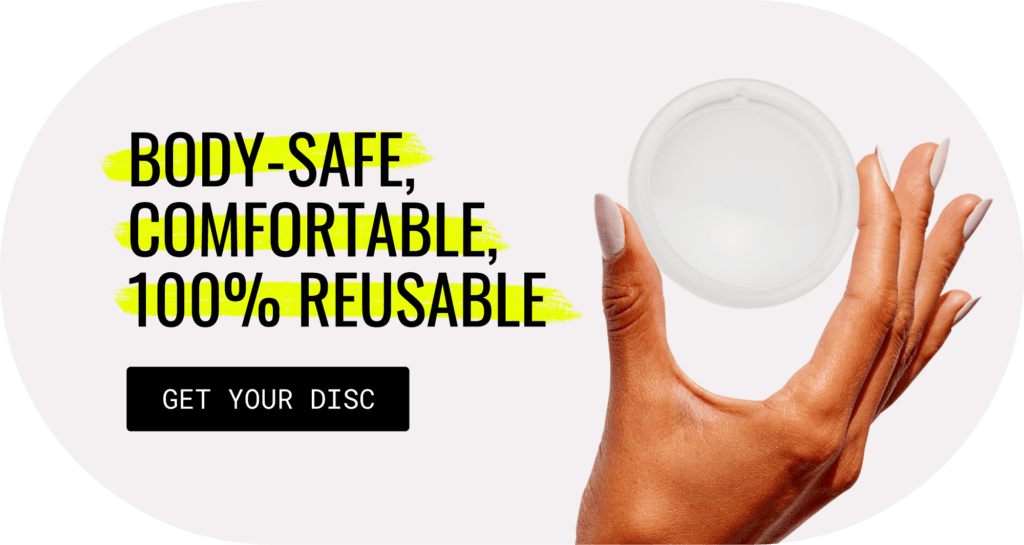
This article is informational only and is not offered as medical advice, nor does it substitute for a consultation with your physician. If you have any gynecological/medical concerns or conditions, please consult your physician.
© 2021 The Flex Company. All Rights Reserved.
